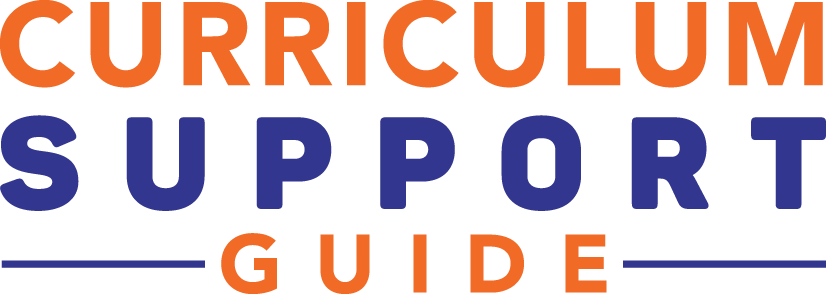
Avoid the pitfalls of curriculum implementation
We know that high-quality instructional materials (HQIM) are a powerful tool for improving teaching and learning. But we also know that without the right support, a new curriculum can lead more confusion than improvement.
But what does the “right support” look like? We set out to help leaders answer that question by creating the Curriculum Support Guide, a set of guidance and tools designed to help school teams attend to their unique context while moving through three distinct phases of curriculum implementation:
- Phase I: Selecting materials that support a vision of great instruction
- Phase II: Developing an intentional implementation plan
- Phase III: Continuously improving teacher support
Within each of these phases, there are decision points that can make or break the success of the curriculum in a school community. Below, we’ll delve into the common pitfalls we’ve seen schools fall into during each phase of the curriculum journey—and provide practical steps and resources to help avoid them.
Phase I: Select
Pitfall: “Nobody asked me.” We see challenges arise during Phase I when teachers are left out of the materials review and selection process—leading them to feel like the decision is forced on them and their students.
Avoiding Phase I challenges
Teachers are central to every successful selection story—their perspectives help ensure that the chosen curriculum meets both students’ learning needs and their own needs as educators. We’ve found that there some important steps leaders can take to invest teachers in the curriculum selection process:
- Form a representative selection team: We recommend forming a selection team including, but not limited to, school and system leaders, coaches, teachers, interventionists, and coordinators of special populations (e.g., multilingual learner coordinators). The resource Selection Team Process lays out different approaches and criteria for forming the selection team.
- Establish a clear vision for instruction: Selection teams should articulate a vision of how they want to transform teaching and learning and then choose a curriculum to support and advance that vision. Setting a vision might seem minor, but this step can help establish the curriculum as a tool to enhance student learning rather than as the end goal in and of itself. Contextualizing a new curriculum within a broader vision can not only help guide the selection team by giving them a clear north star but can help garner buy-in for the new materials across the community. The resource Vision Statements and Tools includes sample statements that selection teams can use as a starting place for drafting a vision for instruction.
Phase II: Plan
Pitfall: “You are telling me to do different things.” When leaders don’t take time to familiarize themselves with the new curriculum, they can end up undermining the materials by giving guidance and feedback in tension with the curriculum’s design—creating mixed signals for teachers.
Pitfall: “I use it as a resource.” Without any specific guidance for how the materials should be used, teachers’ well-intentioned adaptations can dilute the materials to such a degree that students don’t end up mastering the grade-level standards.
Pitfall: “I feel like a robot.” On the other end of the fidelity spectrum, we see that when teachers are asked to be too strict in following the curriculum, they are not empowered to make necessary adjustments to address their students’ specific learning needs.
Avoiding Phase II challenges
We’ve found that schools encounter these pitfalls when implementation plans focus solely on training teachers and skip over the importance of school leaders understanding the curriculum. School leaders don’t need to know every detail of every lesson—that’s not their role—but they should understand the general design and key pedagogical practices of the new curriculum. Teachers want to know their leaders are familiar with the materials they are being asked to use, and leaders need to understand the materials to provide helpful guidance and ongoing support. To avoid Phase II pitfalls, we recommend that leaders take two crucial steps:
- Complete a curriculum study: Studying the design of the curriculum allows leaders to understand the scope of the year as well as individual lesson structures. This process helps them begin to identify the implications for implementation—including instructional minutes, pacing, teacher training, as well as lesson and unit planning. The resource Curriculum Study can help leadership teams plan and execute a learning session.
- Articulate clear expectations for curriculum use: Once leaders have a deeper understanding of the new materials, they can provide helpful guidance to inform teacher planning. The resource Guidance on Curriculum Use provides considerations for setting expectations, including: What are the aspects of a unit that all students should experience? Where might teachers need to make adjustments in their pacing and timing?
Phase III: Continuously improve
Pitfall: “This too shall pass.” The whole curriculum implementation effort is treated as another exercise in compliance rather than rooted in a meaningful, long-term vision for teaching and learning.
Avoiding Phase III challenges
At Instruction Partners, we sometimes refer to Phase III of the curriculum journey as the “teach and learn” phase, because it is all about executing the plan, gathering data and feedback, and making necessary adjustments to continuously improve teaching and learning. We see problems arise during this phase when teachers are left to implement the curriculum without effective support and feedback structures. This is because, even with the most detailed of plans, there is no such thing as a flawless start for any curriculum implementation. Teachers will encounter challenges when the materials are put into practice in the classroom. In order to stay invested in the new materials, they need to know that leaders hear their concerns and are prepared to help them address any problems as they arise.
Instructional leadership teams should regularly monitor teachers’ and students’ experiences with the curriculum in order to provide effective support. The Curriculum Support Guide includes resources that can help leaders understand how implementation support is going across their school:
- Implementation Observation Guidance is a list of the support structures we recommend observing in order to understand how things are going.
- The Implementation Observation Log can be used to record questions and observe trends in implementation.

Implementing a new curriculum is a daunting, complex task. But whether you’re in the midst of implementation and feeling these challenges yourself or you’re at the start of your journey and anticipating what could go wrong—know that these pitfalls are avoidable. Explore the full Curriculum Support Guide for more action steps, guiding questions, and resources to help.
more


